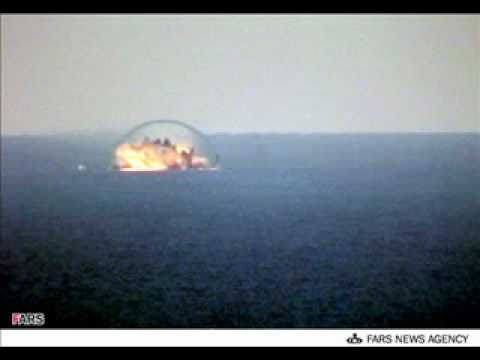
Given that the United States has, by a wide margin, the most powerful and well-equipped military force in the world, a war with Iran has the potential to become a one-sided affair. America’s military spending in recent years has been twice the size of Iran’s entire GDP and, as shown on this graphic, Iran is not even in the top 15 defense spenders:
With a defense spending budget of $6.3 billion in 2015, Iran comes in thirty-third place among the world’s top 126 defense spenders as shown here:
Obviously, given the fact that Iran is surrounded by United States military bases as shown on this map which you can use to zoom in on the Middle East:
…Iran has had to adopt, for the most part, a deterrent-based approach to its military. This approach is based on three main capabilities:
1.) Naval Warfare with the goal of closing down the Strait of Hormuz and interrupting the supply of oil from the Middle East.
2.) Ballistic Missiles.
3.) Non-state militant groups (i.e. Hezbollah).
Despite decades of sanctions, Iran has still been able to upgrade and maintain its military equipment through the use of domestically sourced modifications and upgrades, resulting in one of the strongest military forces in the Middle East. According to Global Firepower, Iran’s military is ranked as number 21 out of 126 nations with the following military equipment:
1.) Air Power – 479 aircraft including 137 fighters/interceptors, 137 fixed-wing attack aircraft, 203 transport aircraft, 128 helicopters, 12 attack helicopters and 80 training aircraft.
2.) Land Systems – 1658 tanks, 1315 armoured fighting vehicles, 320 self-rporpelling funds, 2078 towed artillery and 1474 multiple-launch rocket systems.
3.) Naval Power – 398 naval units including 6 frigates, 3 corvettes, 33 submarines, 254 coastal defence craft and 5 mine warfare units.
Currently, the nation has 545,000 active frontline personnel and 1.8 million active reserve personnel with another 1.4 million Iranians reaching military service on an annual basis.
According to National Interest, even though Iran’s military strength is far lower than the United States and its NATO allies, its strength lies in its ballistic missile system and its midget submarines. Let’s look at the two deterrents in turn:
1.) Ballistic Missiles:
a.) The Khalij-e Fars anti-ship ballistic missile is a solid-fuel supersonic missile with a range of 300 kilometres when carrying a 650 conventional payload. It is based on the Fateh-110 missile that Iran first tested in 2002; the Fateh-110 design was based off of China’s DF-11A. Here is a video showing the Khalij-e Fans in action (please pardon the music!):
[embedyt] http://www.youtube.com/watch?v=Nc7eUO1aw9M[/embedyt]
According to Iranian media, the missile, which was first tested in early 2011, is immune to interception and has a high-precision targeting system. The missile is likely to be used against U.S. ships in the Persian Gulf as well as targeting oil tankers in a move that could close down the Strait of Hormuz, the Persian Gulf bottleneck shown in this graphic:
b.) The Sejjil-1 and Sejjil-2 ballistic missiles are a two-stage, medium range surface-to-surface missile which will have a range of approximately 2000 to 2510 kilometres with a 650 kilogram payload and can carry a 1000 pound payload up to 2000 kilometres. It is solid-fueled which results in shorter launch times and increased mobility. Hereis a informational video of the Sejjil missile back in 2008:
[embedyt] http://www.youtube.com/watch?v=AX8BWiYLFd8[/embedyt]
Here is a video showing both a launching and flight of the Sejjil-2:
[embedyt] http://www.youtube.com/watch?v=LV_Sraasr7c[/embedyt]
Lastly, here is a map showing the ranges of Iran’s missile systems:
2.) Submarines:
The Ghadir-class submarine is designed and built in Iran specifically for use in the shallow coastal waters of the Persian Gulf. They have the capability of firing torpedoes, laying anti-shipping mines and inserting special forces into enemy territory. The Ghadir displaces around 115 long tons and is 29 metres in length. It has a draught of 2.5 metres (compared to 9.4 metres for the U.S. Navy’s Los-Angeles-class submarines) making it perfect for operation in very shallow water. Iran is also developing a supercavitating, high speed torpedo called “Hoot” that is capable of reaching speeds of up to 360 kilometres per hour.
As you can see on this video, the Iranian-built Ghadir class submarines are quite small by western standards:
[embedyt] http://www.youtube.com/watch?v=aeGC6GvcH9g[/embedyt]
Here is a video showing a Ghadir submarine launching a Valfajr torpedo:
[embedyt] http://www.youtube.com/watch?v=YpzcCkkelSA[/embedyt]
In addition to the Ghadir-class submarines, Iran possesses three Russian Kilo-class diesel-electric submarines and one Nahang submarine. Iran is also working on development of a new class of submarine, the Fateh, which has a displacement of 600 long tons and the capability to operate at depths of greater than 200 metres for five weeks.
While none of these submarines compare to the latest and greatest in the U.S. submarine fleet, they could prove to be the proverbial fly-in-the-ointment when it comes to keeping the Persian Gulf’s crowded shipping lanes open, particularly when used against unarmed oil tankers.
Back in 2001 and again in 2003, it looked like wars with both Afghanistan and Iraq would be over in a matter of weeks if not days, given the overwhelming firepower of the U.S. military and its partners. Here we are, a decade and a half later, and neither war is over. My suspicion is that hostilities with Iran will turn out to be a very similar experience for any nation that declares war against it, a fight that will turn into a prolonged battle of attrition with heavy losses and high costs on both sides.
Click HERE to read more.
You can publish this article on your website as long as you provide a link back to this page.

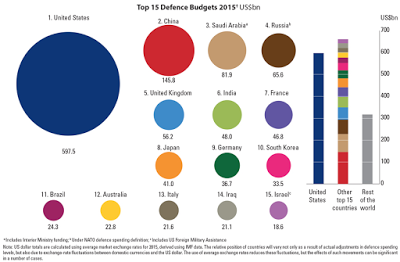
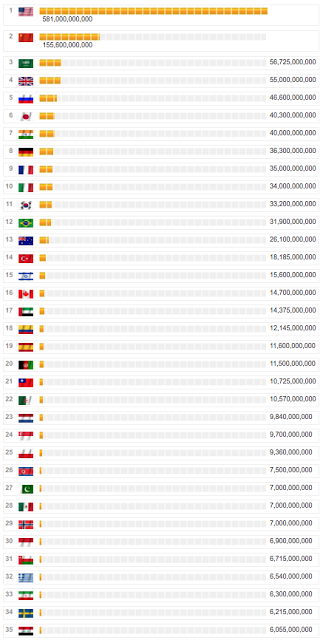
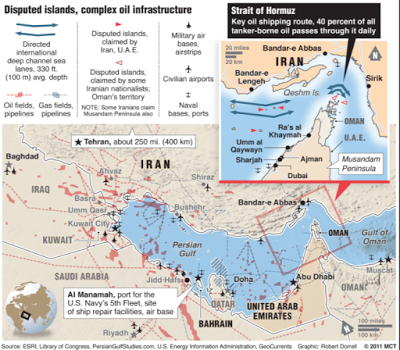
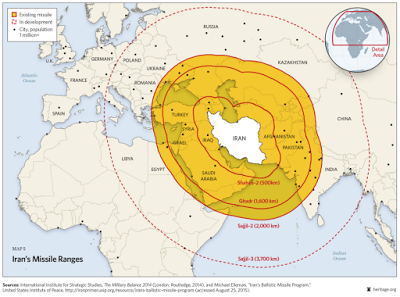
Be the first to comment